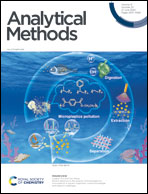Optimizing the supercritical carbon dioxide extraction of sweet cherry (Prunus avium L.) leaves and UPLC-MS/MS analysis
Abstract
To study the application value of sweet cherry leaves before abscission, a supercritical carbon dioxide (SFE-CO2) extraction method was established for sweet cherry (Prunus avium L.) leaves. The extraction temperature, pressure and time were optimized with a Box-Behnken design, and the optimal conditions were 43 °C, 30 MPa, and 120 min, resulting in a yield of 2.52 ± 0.261% (w/w), which agrees well with the predicted value. The yield of the sweet cherry leaf extracts obtained by methanol solvent extraction is 2.03% (w/w); the SFE-CO2 extraction method was more efficient and had a higher yield than the methanol solvent extraction method, and the adverse effects of organic solvent residues and high temperatures on the product during traditional solvent extraction were avoided, resulting in a higher quality product. UPLC-MS/MS in negative ion mode provided 56 identifiable chromatographic peaks, including those of 31 acids (13.25%), 5 sugars (15.94%), 2 alcohols (6.19%), and 18 other compounds (3.86%). The fragmentation pathways of the 7 main components in the sweet cherry leaf extract were identified. The carbohydrates and bioactive substances in the extracts obtained from sweet cherry leaves suggested the potential use of sweet cherry leaves in the food and medical industries.



 Please wait while we load your content...
Please wait while we load your content...